Water Bottle Dimensions: A Complete Guide With Facts in 2025
An average person needs two liters of water daily, while Americans use 167 disposable bottles yearly. Understanding how many inches is a water bottle crucial for informed hydration choices and reducing environmental impact.
Water bottle sizes range from 8 ounces to 64 ounces, affecting routines and health. Selecting the right size is important for various activities like gym workouts or hiking.
This water bottle dimensions guide discusses common sizes, weights, and provides a dimensions table for better decision-making. Choosing the right water bottle ensures consistent hydration and convenience to know how many inches is a plastic water bottle.
Water Bottle Dimensions
Water bottles typically range from 500 milliliters (17 ounces) to 2 liters (68 ounces) in size, with heights of 6 to 12 inches and diameters of 2.5 to 4 inches.
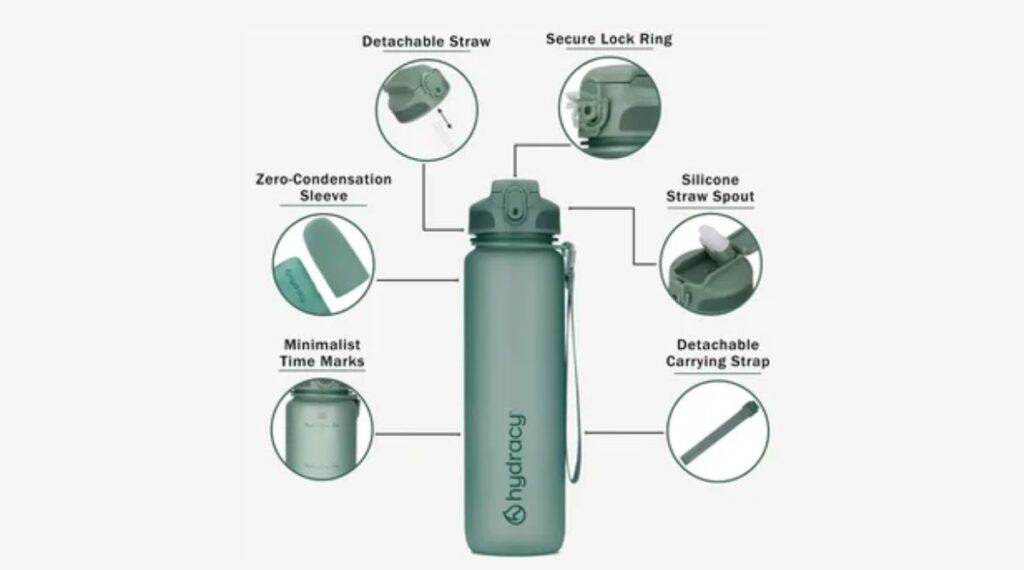
The dimensions of water bottles affect portability and stability; slimmer designs suit outdoor activities, while wider bases provide stability on flat surfaces.
A standard 16 oz bottle measures about 8 to 9 inches tall and fits easily in cup holders and backpacks. Design elements, like ergonomic shapes and wide mouths, enhance user experience.
Standard water bottle size varies based on purpose, from collapsible bottles at 6 inches to larger insulated ones at 12 inches, allowing consumers to choose based on their lifestyle needs.
Standard Water Bottle Dimensions Table
| Water Bottle Capacity | Water Bottle Height (inches) | Water Bottle Length / Diameter (inches) | Water Bottle Height (cm) | Water Bottle Length / Diameter (cm) | Bottle Cap Size in Inches | Bottle Cap Size (mm) |
| 8 oz (237 ml) | 5.5 in | 2.25 in | 14 cm | 5.7 cm | 1.0 in | 28 mm |
| 12 oz (355 ml) | 7 in | 2.5 in | 17.8 cm | 6.4 cm | 1.0 in | 28 mm |
| 16.9 oz (500 ml) | 8 in | 2.5 in | 20.3 cm | 6.4 cm | 1.1 in | 28 mm |
| 20 oz (591 ml) | 8.9 in | 2.75 in | 22.6 cm | 7 cm | 1.1 in | 28 mm |
| 1 Liter (33.8 oz) | 11 in | 3 in | 27.9 cm | 7.6 cm | 1.2 in | 30 mm |
| 1.5 Liter | 12.25 in | 3.5 in | 31.1 cm | 8.9 cm | 1.2 in | 30 mm |
| 2 Liter | 12.5 in | 4 in | 31.8 cm | 10.2 cm | 1.3 in | 33 mm |
How to Understand Water Bottle Sizes
Water bottles vary from 8-ounce to 128-ounce (1 gallon) sizes, with most common sizes between 16 and 32 ounces. These measurements focus on fluid capacity, affecting portability and fit in holders.
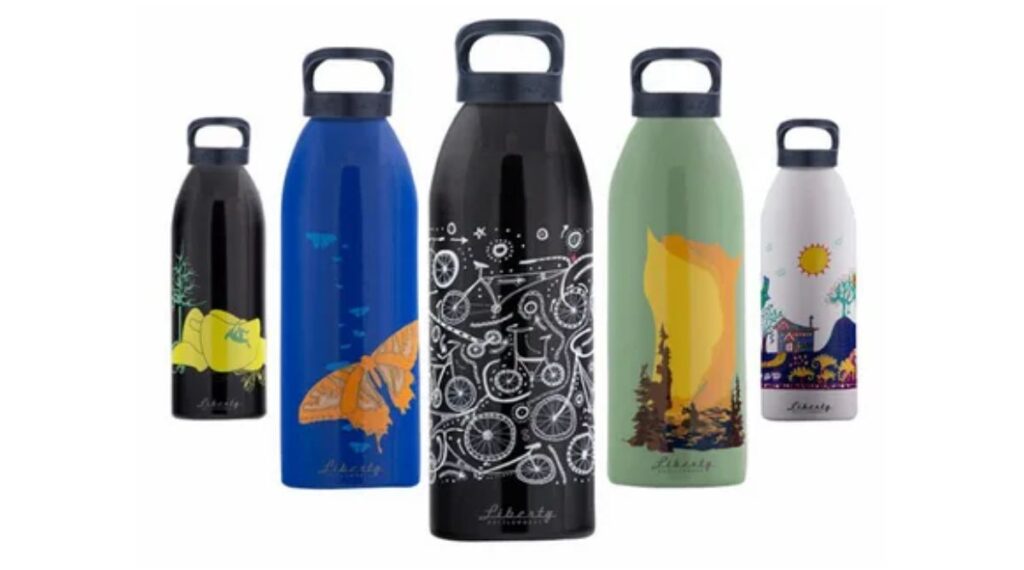
A 16-ounce bottle is compact, suitable for everyday use, while a 40-ounce bottle offers extended hydration but may not fit standard cup holders. The height difference between sizes impacts usability; for instance, a 16-oz bottle is about 8 inches tall, whereas a 32-oz bottle can reach 10-12 inches.
Choosing the right dimensions based on your activities ensures convenience and encourages consistent hydration. A wider mouth can also enhance cleaning and filling ease.
How Many Inches Is A Water Bottle?
Water bottles typically range from 8 to 12 inches in height, with standard 16.9-ounce plastic water bottles around 8 inches tall with a diameter of 2.5 inches. Larger bottles, like 32-ounce and 64-ounce, measure between 10 to 12 inches.
The size varies based on design and intended use; compact bottles are portable, while larger ones emphasize volume. A common 16-ounce bottle stands about 9 inches tall, fitting well in cup holders or backpacks.
These dimensions reflect hydration culture trends, blending convenience with aesthetics. When selecting a water bottle, consider its size for your lifestyle, whether for hiking, gym use, or daily hydration at work.
Plastic Water Bottle Dimensions
Plastic water bottles come in various sizes, with 500 ml being the most common for single use. This size, about 8 inches tall and 2.5 inches wide, is portable and fits in car cup holders.
A very popular 1-liter (33.8 ounces) bottles are around 10 inches tall and provide more hydration without frequent refills. Sport bottles range from 20 to 32 ounces, featuring wider mouths for easy filling and cleaning.
Their design emphasizes functionality, with tapered shapes for better grip. Brands are increasingly adopting eco-friendly designs using recycled materials. These measure up to 11 inches tall and 4 inches wide. These are designed for athletes on the go.
How Tall Is A Water Bottle?
Water bottle height varies by design and purpose, typically ranging from 8 to 14 inches. Standard disposable bottles hold 500 milliliters to 1 liter, while reusable ones are often made of stainless steel or BPA-free plastic.
Specialized bottles for athletes can reach heights up to 18 inches, blending functionality with aesthetics. The popularity of eco-friendly reusable bottles has introduced diverse shapes and sizes, featuring insulation and filters.
Height and volume perceptions are shifting, as compact designs may hold more liquid than taller options.Bottle height reflects changing consumer preferences regarding hydration and sustainability.
Plastic Bottle Cap Size Chart
| Bottle Type / Capacity | Plastic Bottle Cap Size in inches | Plastic Bottle Cap Size in cm | Plastic Bottle Cap Size in mm | Plastic Bottle Cap Size in ml |
| 8 oz (237 ml) | 1.0 in | 2.54 cm | 28 mm | ~5 ml |
| 12 oz (355 ml) | 1.0 in | 2.54 cm | 28 mm | ~5 ml |
| 16.9 oz (500 ml) | 1.1 in | 2.79 cm | 28 mm | ~7 ml |
| 20 oz (591 ml) | 1.1 in | 2.79 cm | 28 mm | ~7 ml |
| 1 Liter | 1.2 in | 3.05 cm | 30 mm | ~8 ml |
| Liter | 1.3 in | 3.30 cm | 33 mm | ~10 ml |
Water Bottle Weight
Water bottle weights affect portability and hydration, crucial for outdoor enthusiasts. Empty plastic bottles weigh 15-20 grams, while stainless steel bottles range from 200-400 grams.
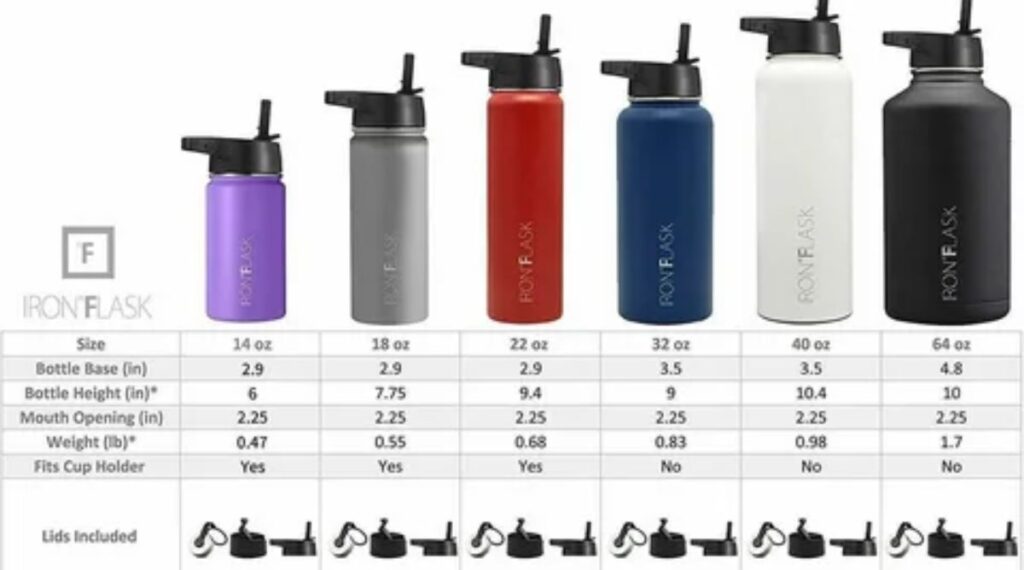
Lightweight options encourage hydration, especially during hikes, reducing dehydration risk. A full liter of water adds about 1 kilogram ( about 2.2 pounds) to the weight. When evaluating bottle weight, consider both the container’s material and design.
A standard 16.9-ounce plastic bottle weighs approximately 1.1 pounds, while stainless steel or glass versions are heavier. Hikers and athletes prefer lightweight bottles to minimize fatigue, and many brands provide durable yet light options for an active lifestyle.
How Many Oz Is A Water Bottle?
Common water bottle sizes include 16.9 oz (500 ml), 24 oz (710 ml), and 32 oz (950 ml). The 16.9-ounce bottle is popular for its convenience, while larger bottles cater to extended hydration needs during workouts or outdoor activities.
Bottle sizes are crucial for effective hydration; a 16-ounce bottle holds about two cups of water and typically measures 8 to 10 inches tall, fitting well in cup holders. While the 16 oz size is widely used, larger options like 32 oz or 64 oz reduce refill frequency during outdoor activities.
Smaller bottles are suitable for children or quick drinks, emphasizing the importance of meeting daily hydration needs for health.
How Many Oz Is A Regular Water Bottle?
Common water bottle sizes include 16.9 oz (500 ml), 24 oz (710 ml), and 32 oz (950 ml), with 16.9 oz (499.793 ml) being popular for convenience. Larger bottles are preferred for hydration during workouts.
The size of a regular water bottle affects daily water intake, with 16 oz bottles offering portability and capacity. A typical 16 oz bottle is about 8 inches tall and 2.5 inches in diameter, fitting easily in cup holders.
Choosing the right size supports hydration goals by encouraging frequent refills. Opting for a 16 oz reusable bottle balances convenience and sustainability, promoting consistent hydration throughout your day.
How Many Water Bottles Is 1 Liter?
One liter of water equals about 33.8 fluid ounces, significant for common bottle sizes. Standard bottles are usually 500 milliliters or 1 liter, with one liter equating to two 500 ml bottles.
There are also niche sizes of bottles, like the 12-ounce (355 ml) bottle. These measurements can promote healthier hydration habits.
Larger bottles may encourage consistent hydration by reducing refill frequency, while smaller bottles offer convenience but might lead to less overall intake.
Standard Water Bottle Sizes
Standard water bottles typically come in sizes like 16.9 ounces (500 ml) and 1 liter. The 500 ml bottle is portable and ideal for convenience, while the 1-liter size suits longer outings.
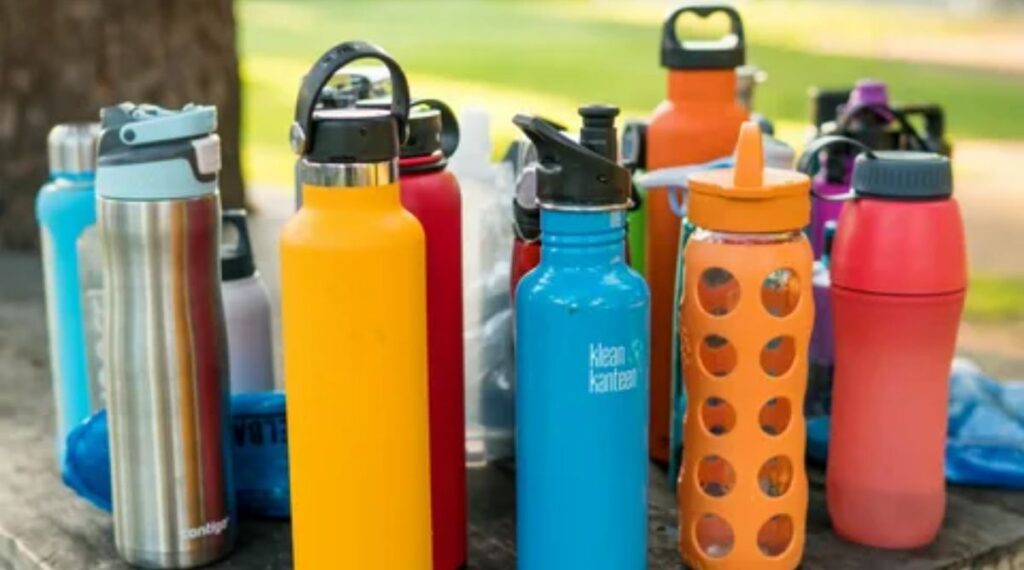
Other sizes include the 12-ounce (355 ml) bottle for kids’ lunches and larger 2-liter bottles for gatherings. Knowing these dimensions enhances hydration experiences, allowing for better intake tracking. Specialized bottles for athletes may feature built-in filters or insulation.
Standard Water Bottle Size Chart
| Bottle Capacity | Height (inches) | Diameter (inches) | Ounces (oz) | Milliliters (ml) |
| Small | 6 | 2.25 | 8 | 237 |
| Medium | 8 | 2.5 | 16.9 | 500 |
| Large | 11 | 3 | 33.8 | 1000 |
| Extra Large | 12.5 | 4 | 67.6 | 2000 |
2 Liter Bottle Diameter
A standard 2-liter plastic bottle has a diameter of 9 to 10 cm (approximately 3.5 to 4 inches) for easy handling. This design enhances stability, reducing the risk of tipping, and ensures efficient pouring.
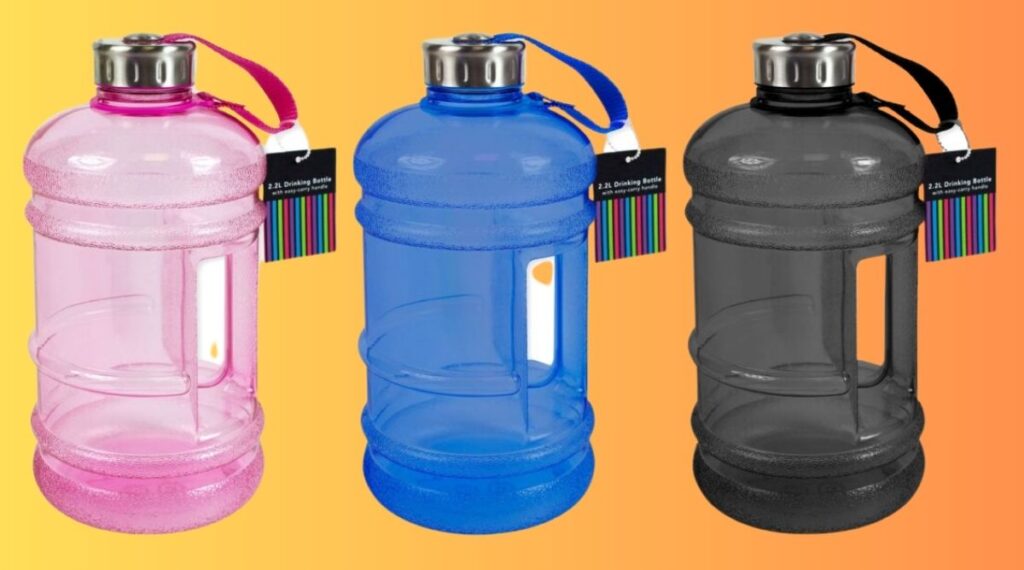
The wider base contributes to its lower center of gravity, making it practical for various settings like picnics. Understanding that 1 liter equals 1,000 milliliters clarifies that a 2-liter bottle holds 2,000 ml.
The design of a 2-liter bottle is optimized for efficient manufacturing and storage. As health consciousness rises, selecting the appropriate bottle size can impact daily water intake at the gym or work, helping consumers make informed hydration choices.
500 ML Bottle Size
The 500 ml bottle is ideal for hydration, balancing portability and convenience. It holds about 16.9 ounces, making it popular among fitness enthusiasts who appreciate its compactness for workouts and travel.
This size encourages regular hydration without the bulk of larger bottles. Environmentally, 500 ml bottles are more sustainable, requiring less material and promoting reuse for water, juices, and sports drinks.
Many brands create stylish and functional designs, aligning sustainability with modern trends. As awareness of health and wellness grows, the 500 ml bottle symbolizes conscious living while serving as a practical choice for daily hydration needs.
Conclusion
Understanding water bottle dimensions is key for selecting the right one, with sizes typically ranging from 500ml to 2 liters. A 16-ounce bottle suits everyday use, while a 32-ounce option is better for outdoor activities.
The design, including width and height, influences fit in cup holders and stability. Familiarizing yourself with standard sizes like 8-ounce to 64-ounce bottle sizes that accommodate various preferences and activities helps you choose between convenient, portable bottles and larger options for workouts.
Consider weight and cap sizes for better usability. Stay hydrated by selecting a bottle that meets your size needs and reflects your style. Explore our guide to find the perfect water bottle for your routine!







